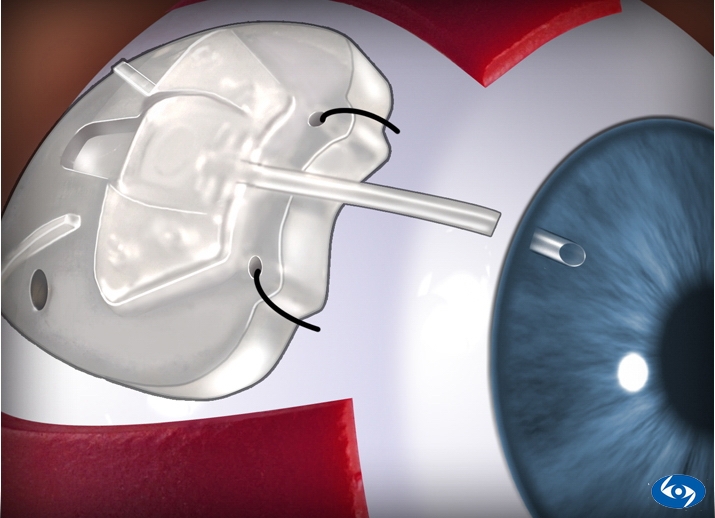
WHAT DOES THE TREATMENT INVOLVE?
It’s a surgical procedure for the treatment of glaucoma that involves inserting a tube to connect the intraocular tube with a device (that may or may not have a valve) located below the conjunctiva to drain the aqueous humour from the eye.
WHEN IS THIS TREATMENT INDICATED?
Generally, it is used for glaucoma where other types of filtration surgery have failed, for types of glaucoma where the result is better than other techniques like for neovascular glaucoma, or when the state of the conjunctiva would prevent the use of surgical techniques.
HOW IS IT PERFORMED?
It is perfomed under local anaesthetic and sedation, so that the patient is completely calm. The majority of the device is placed on the outside of the eye, below the conjunctiva.
A small tube is place in the anterior chamber of the eye. The liquid drains through the tube to the posterior part of the implant where it builds up and is reabsorbed.
RESULTS
The results of drainage devices may vary depending on the type of glaucoma, the age of the patient, the state of the conjunctiva and the number of previous surgeries. They normally control the intraocular pressure in the majority of cases, although over time topical treatment should be added to control it.
POSSIBLE RISKS
There is the possibility that the pressure is too low. This is known as “hypotony”. The implant may also interfere with the external muscles that move the eye causing double vision.
If there is excessive scarring around the device, it may block the fluid from being reasborbed, which, once again, leads to an increase in the pressure. To treat this, hypotensive eyedrops or new procedures may be required.
Other complications may include corneal lesions, which may be due to the mechanical contact between the tube on the inside of the eye and the inner part of the cornea.
PROFESSIONALS WHO PERFORM THIS TREATMENT
Dr. Maria Isabel Canut
Dr. Francisco Ruiz Tolosa
Dr. Federico Trejos
